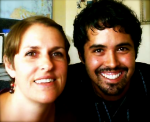


Theme
Social Networking
Category
Social Media
INSTITUTION
Ross University School of Medicine
Social networking is one of the most popular forms of communication today. Facebook alone has an active user base of over 500 million, which continues to grow at a rapid pace (Grossek, Bran, & Tira, 2011). Innovative educators have begun thinking of ways to integrate social networking into the classroom, to support both teaching and learning. There are several Facebook features that lend this social networking site naturally to education. These include the ability to create special pages for education, and user-friendly options to add polls, announcements, videos, images, and links, all of which help to make Facebook a useful educational tool (Munoz & Towner, 2009).
This study provides faculty with students’ perceptions about the use of Facebook in medical education. Facebook seems to be a form of communication that can effectively be used for educational purposes, which students find convenience and easy to use. In addition, we found that Facebook provides a forum for students to learn from questions asked by their peers, since Facebooks allows all members of the page to see all postings, which is not accomplished when students ask questions via e-mail or during office visits.

The use of social networking can be utilize to support teaching and learning via an innovatove means of communication between students and educators. Facebook is widely used by students today, so they find it to be a convenient and easy way to communicate with faculty. Also, Facebook allows students to see and learn from questions and answers posted by their peers, which opens a new avenue for learning which is not possible through e-mail and office visits with faculty.
First semester students at Ross University School of Medicine (RUSM) were given the option to communicate with their physiology professor via e-mail, office appointments, and/or through a Facebook discussion page. On the first day of the cardiovascular module, students were informed about the Facebook page, and invited to explore and use it as a communication tool. 40% of all incoming semester 1 students choose to join ("like") the cardiovascular physiology Facebook page, and the link to this Facebook page is below:
http://www.facebook.com/DrSheakleysCardioPhys

The majority of students who participated in this study revealed they used Facebook on a daily basis. Of those students who joined the cardiovascular physiology Facebook page, 90% checked the page daily, but nearly 100% of students said they check their school e-mail daily. When all communications between the faculty member and students were tallied for, it was found that nearly the same number of communications were received via e-mail (166) as via Facebook discussion posts (136), and 64 students chose to visit the faculty member during office hours to discuss questions in person.
.png)
We would like to acknowledge the students for taking the time to use the Cardiovascular Physiology Facebook page and participate in the study!

Grosseck, G., Bran, R., & Tiru, L. (2011). Dear teacher, what should I write on my wall? A case study on academic uses of Facebook. Precedia Social and Behavioral Sciences, 15, 1425-30.
Munoz, C. & Towner, T. (2009). Opening Facebook: How to Use Facebook in the College Classroom. In I. Gibson et al. (Eds.), Proceedings of Society for Information Technology & Teacher Education International Conference 2009 (pp. 2623-2627). Chesapeake, VA: AACE.
Retrieved from
 Send Email
Send Email